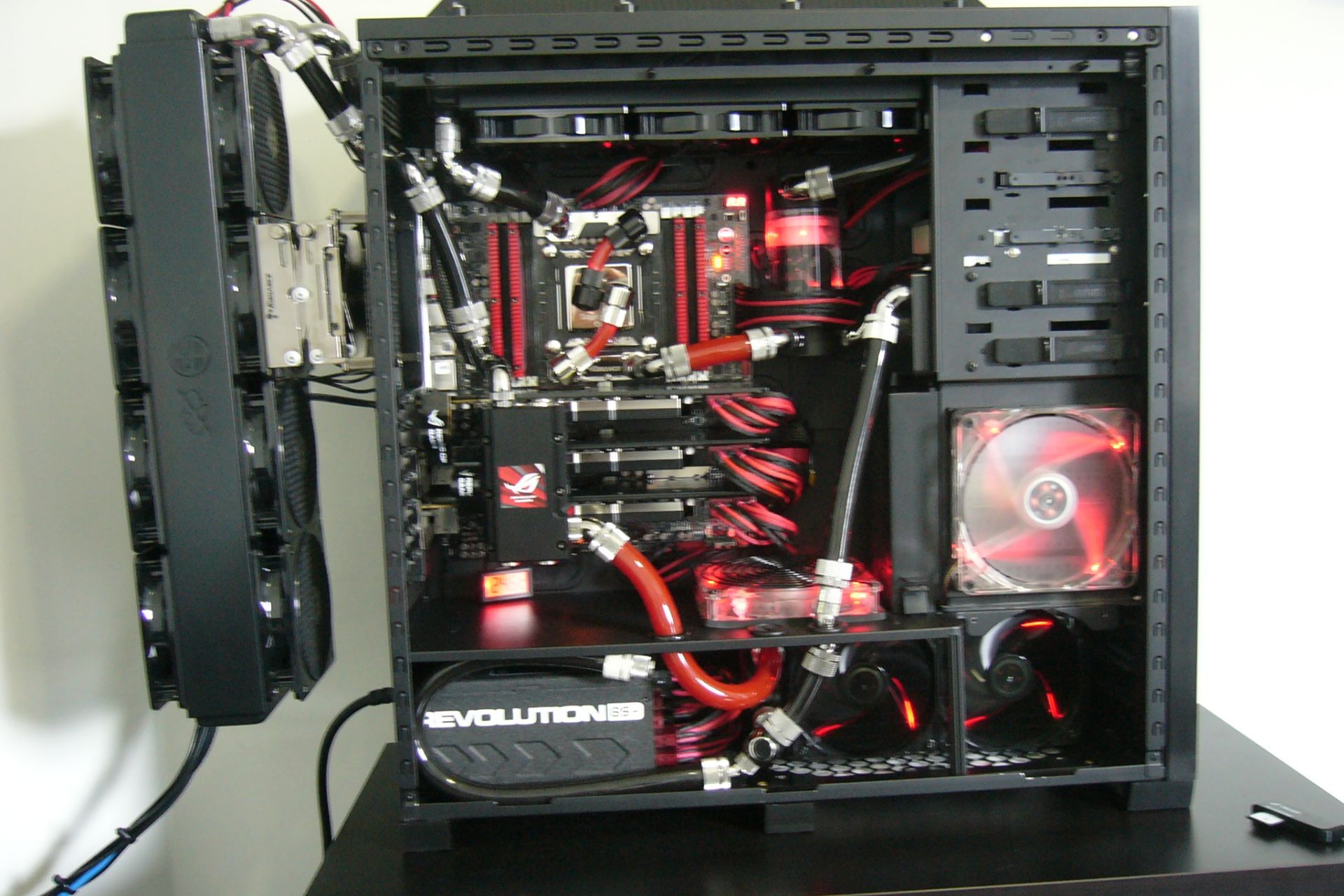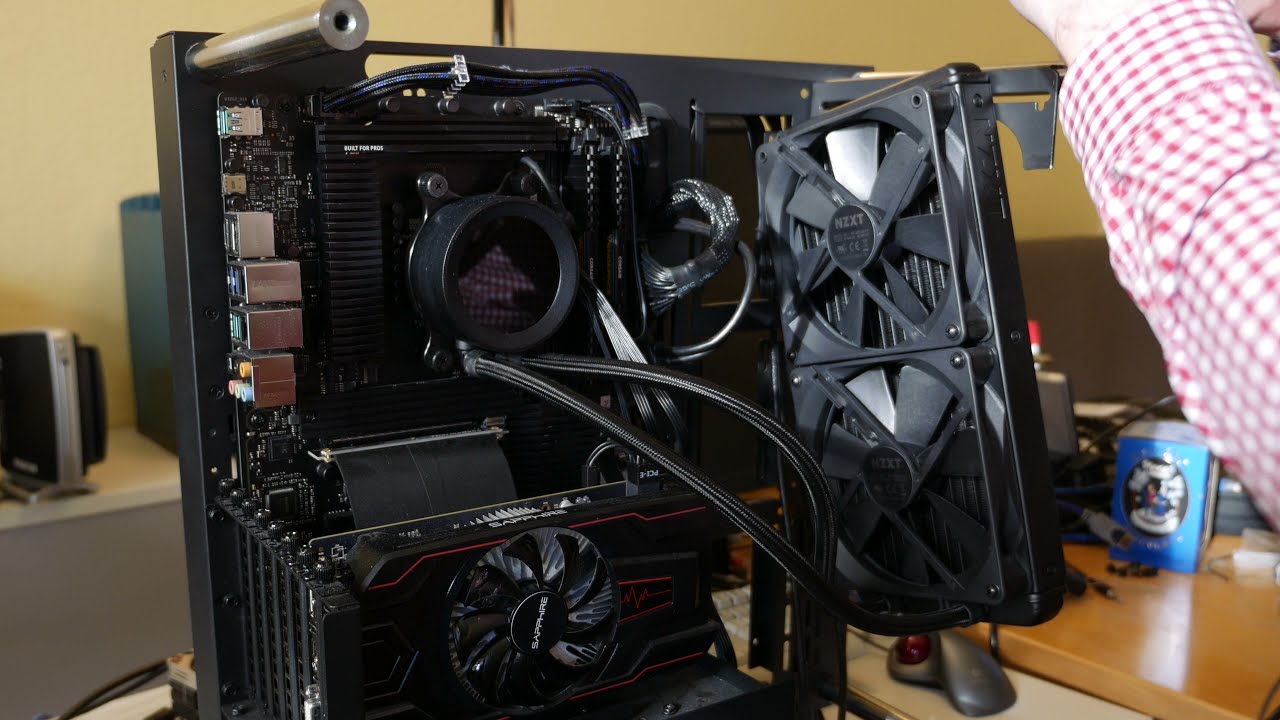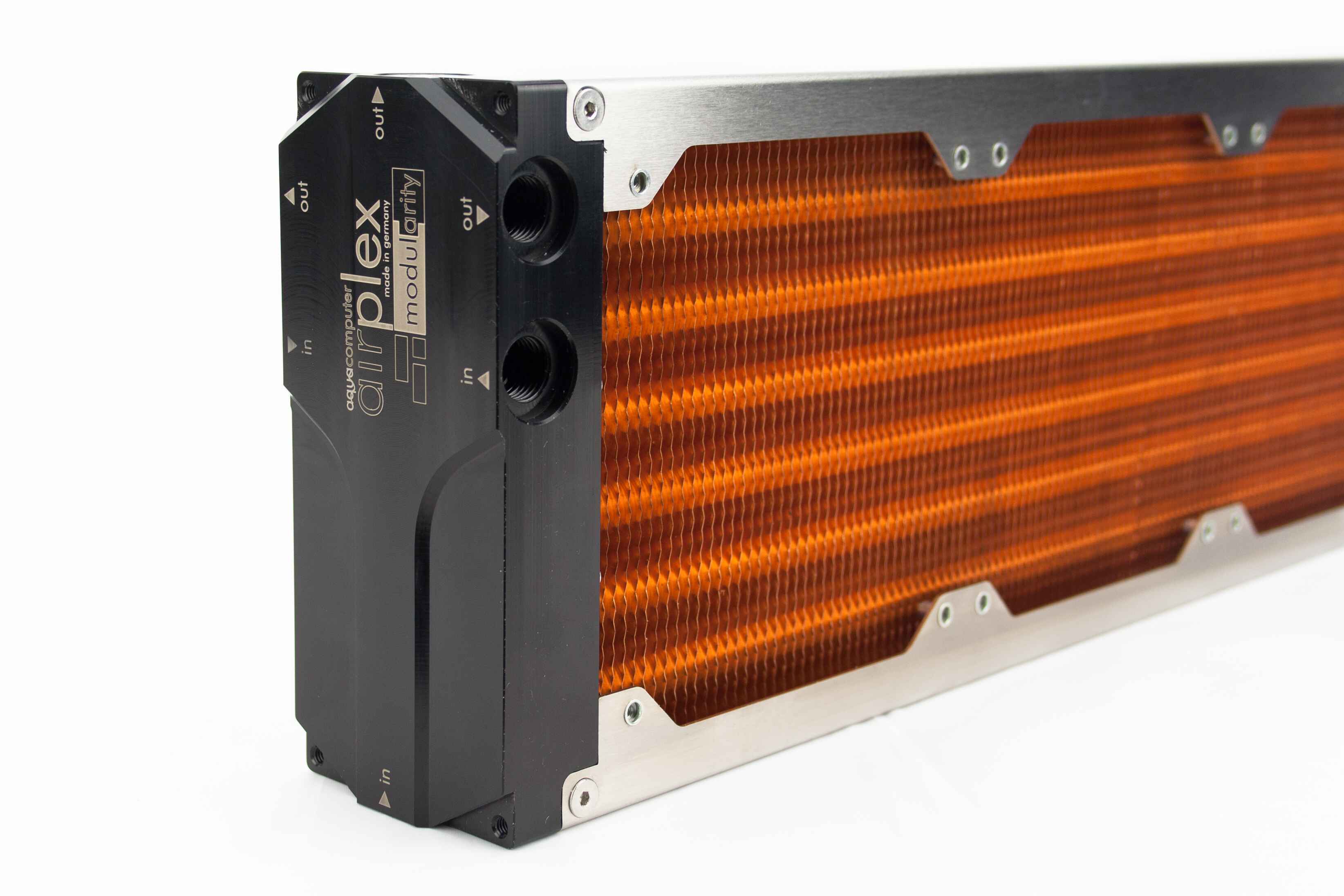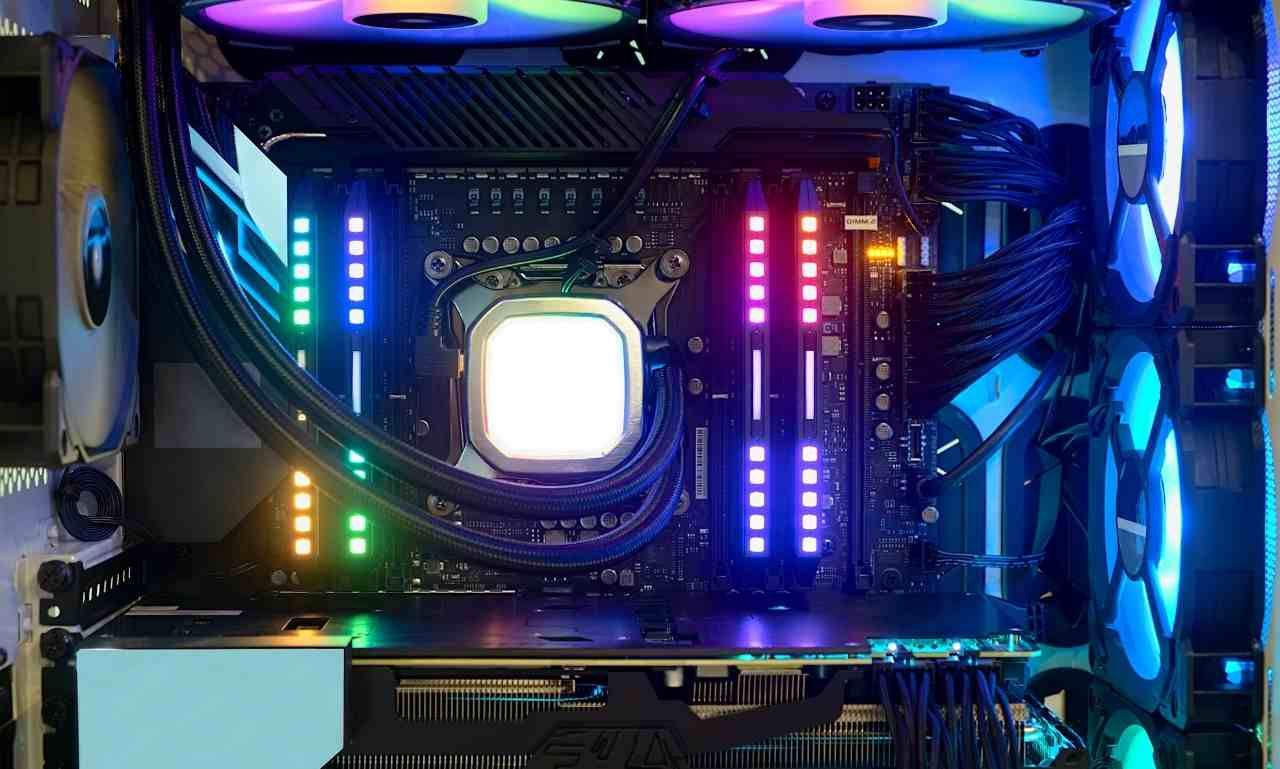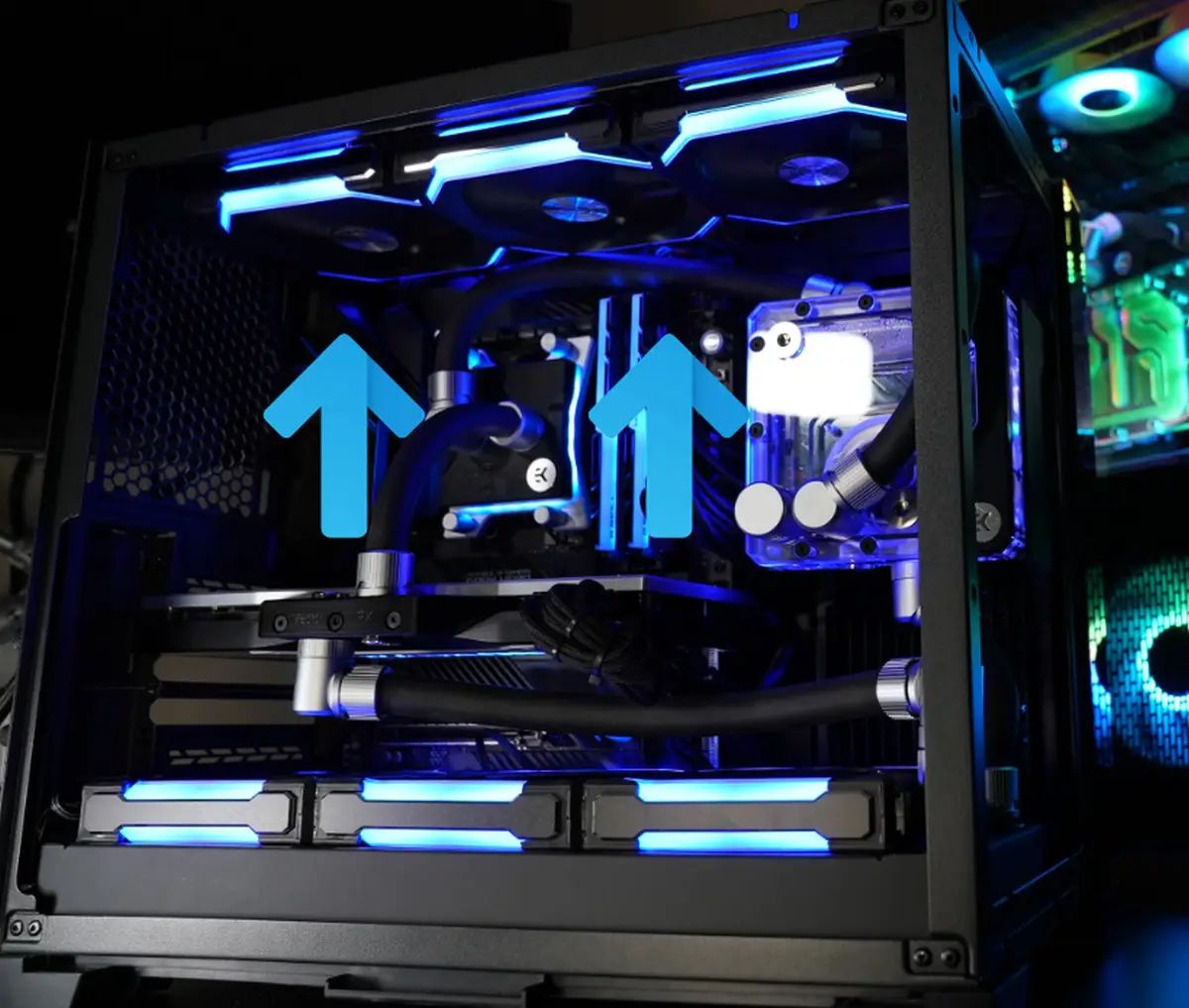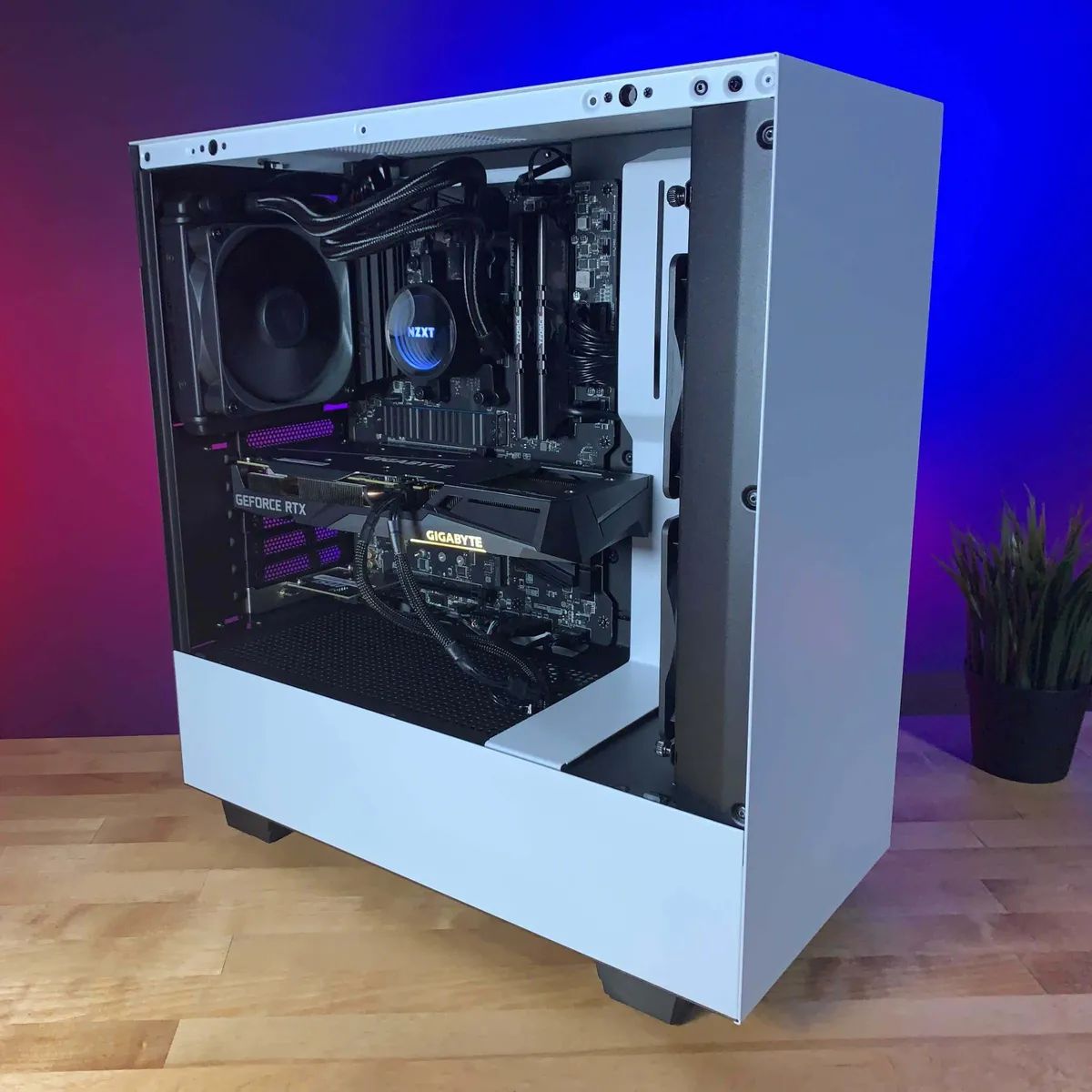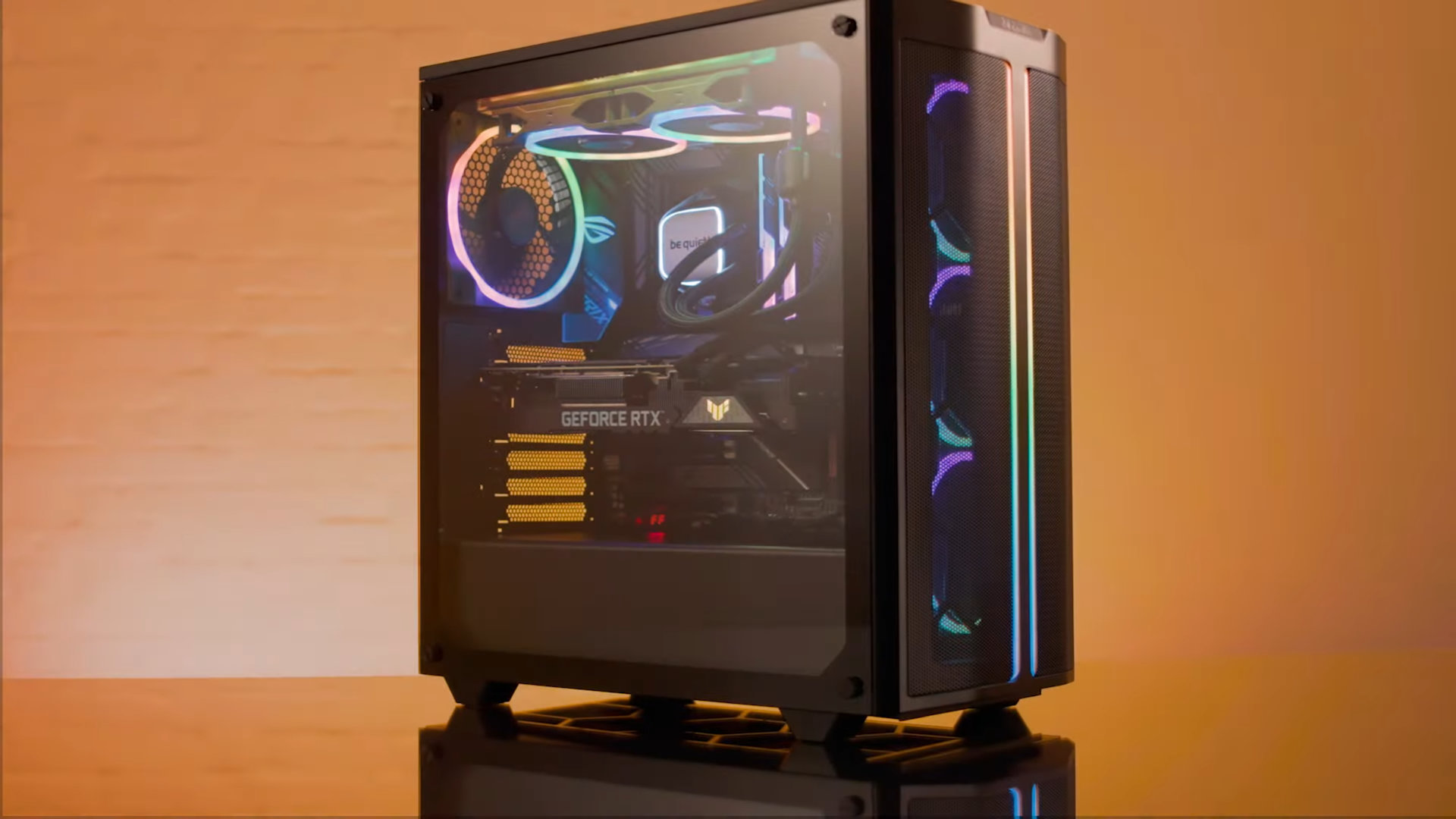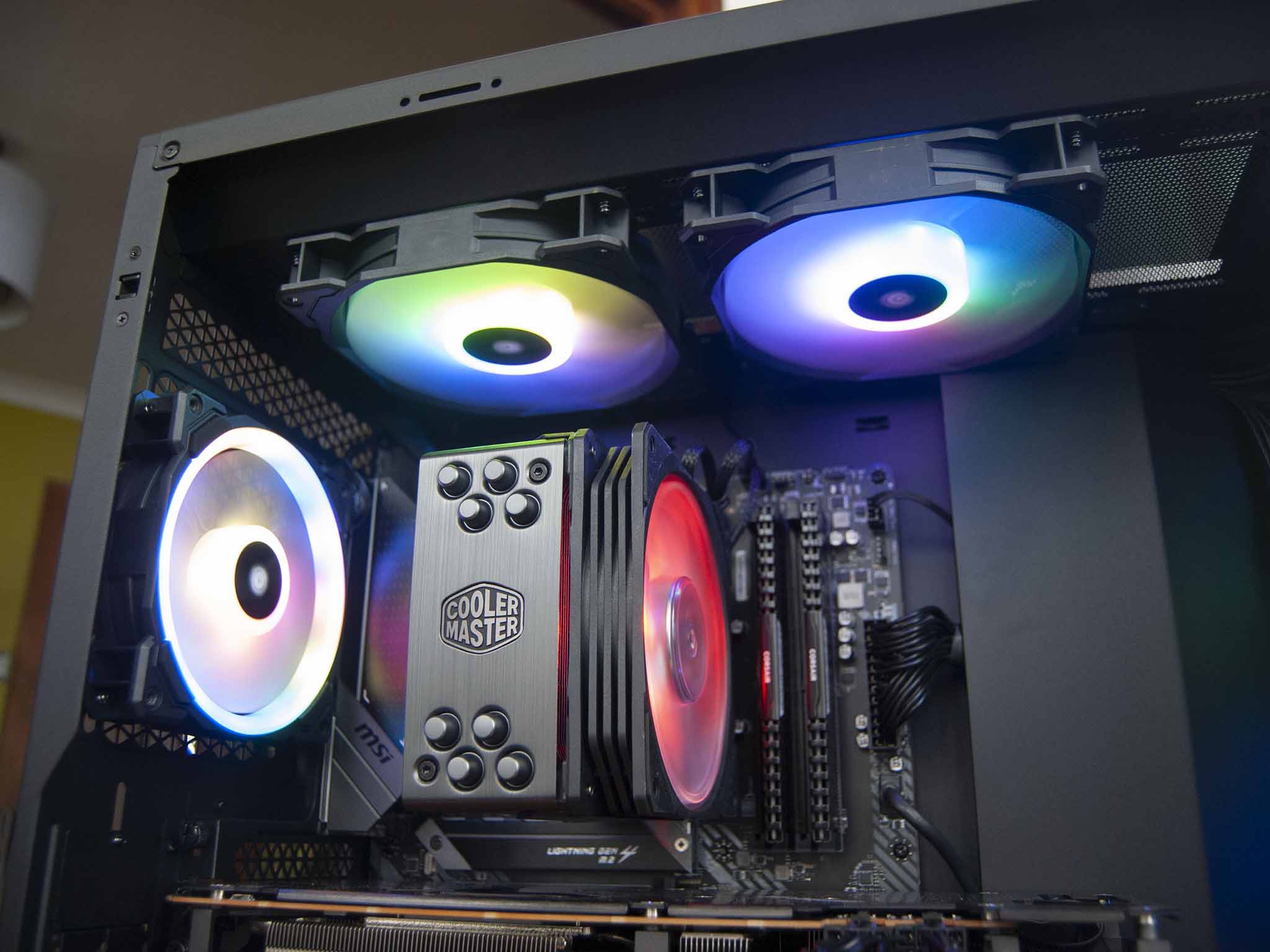Introduction
When it comes to building a powerful gaming or high-performance PC, keeping temperatures under control is crucial. Excessive heat can damage internal components, lead to system instability, and hinder overall performance. This is where a radiator plays a vital role in maintaining optimal temperatures.
A radiator in a PC case is not too different from the radiator in a car. It is an essential component of liquid cooling systems, designed to dissipate heat generated by the computer’s CPU and GPU. By effectively removing heat from these components, a radiator ensures that your PC operates smoothly even under demanding tasks, such as gaming or video editing.
In this article, we will explore the purpose and functionality of a radiator in a PC case, as well as the benefits it offers. We will also discuss how to choose the right radiator for your PC case and provide some installation and maintenance tips to ensure optimal performance.
So, if you’re curious to learn more about how a radiator can help keep your computer cool and maximize its potential, read on!
What is a radiator in a PC case?
A radiator in a PC case is a component of a liquid cooling system that helps dissipate heat generated by the computer’s central processing unit (CPU) and graphics processing unit (GPU). It consists of a series of thin metal tubes or fins that are connected to water-containing chambers. These chambers are responsible for carrying the heated water away from the CPU and GPU and into the radiator.
Once the heated water reaches the radiator, it undergoes a process called “heat exchange.” Heat from the water is transferred to the metal tubes or fins, which provide a large surface area for efficient heat dissipation. The radiator is typically equipped with fans that help increase airflow, further aiding in heat removal.
It’s important to note that a radiator in a PC case is different from the kind found in a car. While both serve the purpose of cooling, PC radiators are specifically designed to handle the heat output produced by high-performance CPUs and GPUs. They are smaller in size and are optimized to fit inside a computer case.
Radiators in PC cases come in various sizes, ranging from 120mm up to 360mm, with multiple fan mounting options. The size of the radiator you choose may depend on factors such as available space in your PC case, your cooling requirements, and the compatibility with other cooling components.
In the next section, we will delve into the functioning of a radiator in a PC case and how it helps regulate temperatures within your computer.
How does a radiator work?
A radiator in a PC case operates on the principle of heat exchange to effectively dissipate the heat generated by the CPU and GPU. It is an integral part of a liquid cooling system, working in collaboration with other components such as the water block, pump, and fans.
Here’s a step-by-step breakdown of how a radiator works:
- Circulation of cooling liquid: The liquid cooling system consists of a coolant, usually a mixture of water and an anti-corrosion agent, that circulates through the system. The heated coolant is carried away from the CPU and GPU toward the radiator.
- Heat transfer: As the heated coolant flows through the radiator, it comes into contact with the metal tubes or fins. These tubes or fins provide a large surface area that encourages effective heat transfer. The heat from the coolant is transferred to the metal surface of the radiator.
- Fan-assisted cooling: To enhance the heat dissipation process, most radiators are equipped with one or more fans. These fans help increase airflow over the radiator, further facilitating heat transfer. The fans draw in cool air from outside the case and push it through the radiator, expelling the hot air out of the case.
- Thermal equilibrium: Through the process of heat exchange and fan-assisted cooling, the heat from the coolant is gradually released into the surrounding air. This allows the coolant to cool down and maintain a lower temperature, ready to be recirculated through the system again.
The effectiveness of a radiator depends not only on its design and size but also on factors such as the quality and flow rate of the coolant, fan configuration, and overall airflow within the PC case. It’s important to ensure proper ventilation and placement of the radiator to optimize its performance.
In the next section, we will discuss why a radiator is necessary in a PC case and the benefits it brings to overall system performance.
Why do you need a radiator in a PC case?
A radiator in a PC case is essential for several reasons, especially when it comes to high-performance computing or overclocking. Here are a few key reasons why you need a radiator in your PC case:
- Temperature regulation: CPUs and GPUs can generate significant amounts of heat, especially during intensive tasks such as gaming or video rendering. If this heat is not dissipated efficiently, it can lead to overheating and cause system instability or even permanent damage to your components. A radiator helps regulate temperature by effectively dissipating excess heat, keeping your PC operating within safe parameters.
- Improved performance: Excessive heat can hinder the performance of your CPU and GPU. High operating temperatures can result in thermal throttling, where the components automatically reduce their performance to prevent overheating. By using a radiator to maintain lower temperatures, you can unlock the full potential of your hardware and enjoy smoother, more consistent performance.
- Longevity of components: Excess heat can significantly reduce the lifespan of your CPU and GPU. Continuous exposure to high temperatures can degrade the internal components over time, leading to premature failure. A radiator helps keep temperatures in check, allowing your components to operate within their recommended temperature ranges and prolonging their lifespan.
- Quiet operation: Air coolers can sometimes be noisy, especially when the CPU and GPU are under heavy load. By utilizing liquid cooling with a radiator, you can reduce noise levels as the fans on the radiator operate at lower RPMs to achieve the same level of cooling. This can result in a quieter and more pleasant computing experience.
- Overclocking potential: Overclocking is the process of pushing your CPU or GPU beyond their stock frequencies to achieve higher performance. However, overclocking generates more heat, increasing the risk of overheating without proper cooling. A radiator, paired with a robust liquid cooling system, allows for better heat dissipation, enabling more stable and higher overclocking potential.
With these benefits in mind, it becomes clear why a radiator is a crucial component in a high-performance PC. It ensures the longevity of your components, improves system performance, and provides you with the opportunity to push your hardware to its limits safely.
In the next section, we will explore the specific advantages of using a radiator in a PC case.
Benefits of using a radiator in a PC case
Using a radiator in your PC case provides several benefits that enhance overall system performance and longevity. Let’s explore some of the key advantages:
- Effective heat dissipation: The primary function of a radiator is to dissipate heat generated by the CPU and GPU. By efficiently transferring heat from the coolant to the surrounding air, a radiator helps maintain lower operating temperatures, preventing overheating and ensuring optimal hardware performance.
- Enhanced system stability: Excessive heat can cause your CPU and GPU to throttle their performance, leading to decreased system stability. With a radiator, you can keep temperatures under control, minimizing the risk of thermal throttling and maintaining steady performance even during demanding tasks.
- Reduced noise: Compared to air cooling solutions, radiators with their accompanying fans operate at lower RPMs to achieve similar cooling efficiencies. This results in quieter operation, allowing you to enjoy a more peaceful and undisturbed computing experience.
- Compatibility with overclocking: Overclocking your CPU or GPU can provide a significant performance boost, but it also generates more heat. A radiator, combined with a robust liquid cooling system, can effectively dissipate the increased thermal load, enabling stable and safe overclocking without compromising system longevity.
- Improved aesthetics: Radiators, often with their sleek and modern designs, can add a visually pleasing touch to your PC case. They come in various sizes and styles, allowing you to choose the one that suits your build and personal preferences, enhancing the overall aesthetics of your PC.
- Longer component lifespan: Excessive heat can accelerate the aging process of your components, leading to a shorter average lifespan. By maintaining lower temperatures with the help of a radiator, you can extend the longevity of your CPU and GPU, ensuring they remain reliable and perform optimally for a longer duration.
These benefits make a radiator an essential component in high-performance PCs, especially for gamers, content creators, and enthusiasts seeking stable and efficient operation. By incorporating a radiator into your PC cooling setup, you can experience improved system performance, quieter operation, and extended hardware lifespan.
In the next section, we will provide some tips on how to choose the right radiator for your PC case.
Choosing the right radiator for your PC case
When it comes to selecting a radiator for your PC case, there are a few important factors to consider. Choosing the right radiator ensures optimal cooling performance and compatibility with your specific setup. Here are some key points to keep in mind:
- Size: Radiators come in various sizes, usually denoted in millimeters (mm). The most common sizes are 120mm, 240mm, 280mm, and 360mm. The size of the radiator you choose depends on the available space in your PC case and the cooling requirements of your CPU and GPU. Larger radiators generally offer better heat dissipation, but they may not fit in all case configurations.
- Fan compatibility: Consider the number of fans your chosen radiator supports. Radiators can accommodate different fan configurations, such as single, dual, or triple fan setups. Make sure your PC case has enough fan mounts and that the radiator’s fan placement matches your desired setup.
- Fin density: The fin density of a radiator refers to the number of fins per inch (FPI). Higher fin density provides more heat dissipation but can also restrict airflow, requiring stronger fans to overcome this resistance. Lower fin density allows for better airflow but may result in reduced heat dissipation. Strike a balance based on your cooling needs and fan capabilities.
- Compatibility with fittings and tubing: Ensure that the fittings and tubing of your liquid cooling system are compatible with the radiator you choose. Pay attention to the type of fittings (e.g., G1/4) and the tube sizes supported by the radiator (e.g., 10mm, 12mm, or 16mm). Compatibility ensures a leak-free and secure connection with your cooling components.
- Fin arrangement: Some radiators feature different fin arrangements, such as standard fins or split fin designs. While split fin radiators offer improved airflow and heat dissipation, they may require higher static pressure fans to reach their maximum potential. Consider your airflow requirements and fan capabilities when selecting a specific fin arrangement.
- Build quality and brand reputation: Opt for a radiator from a reputable brand known for their quality and reliability. Look for radiators made from durable materials, such as aluminum or copper, that are resistant to corrosion. Quality construction safeguards against leaks and ensures long-term performance.
By keeping these factors in mind, you can select the right radiator that fits your PC case, cooling requirements, and overall setup. Don’t forget to consider your budget as well, as radiators can range in price depending on their size, brand, and features.
In the next section, we will discuss the installation and maintenance of a radiator in a PC case.
Installation and maintenance of a radiator in a PC case
Installing and maintaining a radiator in your PC case is crucial for efficient cooling and long-lasting performance. Here are some steps to guide you through the installation process and tips to keep your radiator functioning optimally:
- Prepare your case: Before installing the radiator, ensure that your PC case has enough space to accommodate it. Remove any obstacles, such as drive cages or excess cables, that may obstruct the installation.
- Choose the mounting location: Identify the best location for mounting the radiator inside your case. It is usually installed at the front, top, or rear panel, depending on the case layout and fan compatibility. Refer to your case manual or manufacturer’s documentation for guidance.
- Mount the radiator: Attach the radiator to the designated mounting points using the provided screws or brackets. Ensure that it is securely fastened, but avoid over-tightening, as it may damage the radiator or create an uneven pressure on the CPU and GPU.
- Connect the fans: If your radiator includes fans, connect them to the appropriate fan headers on your motherboard or fan controller. Make sure to follow the manufacturer’s instructions regarding fan placement and orientation for optimal airflow.
- Install the water block and tubing: Connect the water block of your liquid cooling system to the CPU and GPU. Use appropriate fittings and tubing, ensuring a tight and leak-free connection. Refer to the specific instructions provided with your cooling system for proper installation.
- Power up and test: Once the radiator and cooling system are properly installed, power on your PC and monitor the temperatures. Check for any leaks or unusual noises. If everything runs smoothly, you are good to go.
As for maintenance, it is important to regularly clean the radiator to prevent dust accumulation, which can obstruct airflow and hinder cooling performance. Use compressed air or a soft brush to remove any dust or debris from the fins. Additionally, inspect the fittings and tubing periodically to ensure there are no signs of leakage or damage.
It is also recommended to replace the coolant in your liquid cooling system according to the manufacturer’s guidelines. Over time, coolant can deteriorate and lose its effectiveness, potentially leading to reduced cooling performance. Be sure to follow proper disposal methods when replacing the coolant.
By following these installation and maintenance practices, you can ensure that your radiator operates efficiently and maintains optimal cooling performance for your PC.
In the next section, we will wrap up the article with a brief summary of the importance of a radiator in a PC case and its impact on overall system performance.
Conclusion
A radiator in a PC case serves a critical role in maintaining optimal temperatures and ensuring efficient cooling of the CPU and GPU. By dissipating heat through a process of heat exchange, radiators help prevent overheating, enhance system stability, and improve overall performance.
Choosing the right radiator for your PC case is essential. Consider factors such as size, fan compatibility, fin density, and brand reputation to ensure optimal cooling performance and compatibility with your setup.
Installing a radiator requires careful planning and preparation. Ensure that your PC case has enough space and choose the appropriate mounting location. Follow the manufacturer’s instructions for secure installation and proper connection of fans and cooling components.
To maintain your radiator’s performance, regular maintenance is necessary. Cleaning the radiator to prevent dust accumulation, inspecting fittings for leaks, and replacing coolant according to manufacturer guidelines are important tasks to preserve optimal cooling efficiency.
In summary, a radiator in a PC case is crucial for managing heat and ensuring stable performance in high-performance PCs. It offers benefits such as effective heat dissipation, improved system stability, reduced noise, and extended component lifespan. By understanding how radiators work and implementing proper installation and maintenance practices, you can keep your PC cool and maximize its potential.
So, whether you’re a gamer, content creator, or simply a PC enthusiast, investing in a radiator for your PC case is a wise decision to achieve a cooler, quieter, and more powerful computing experience.







